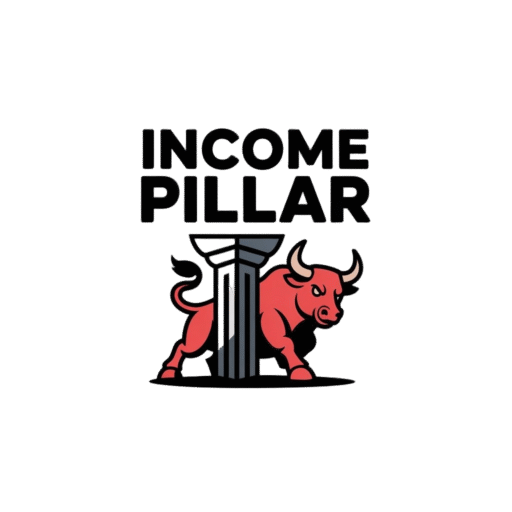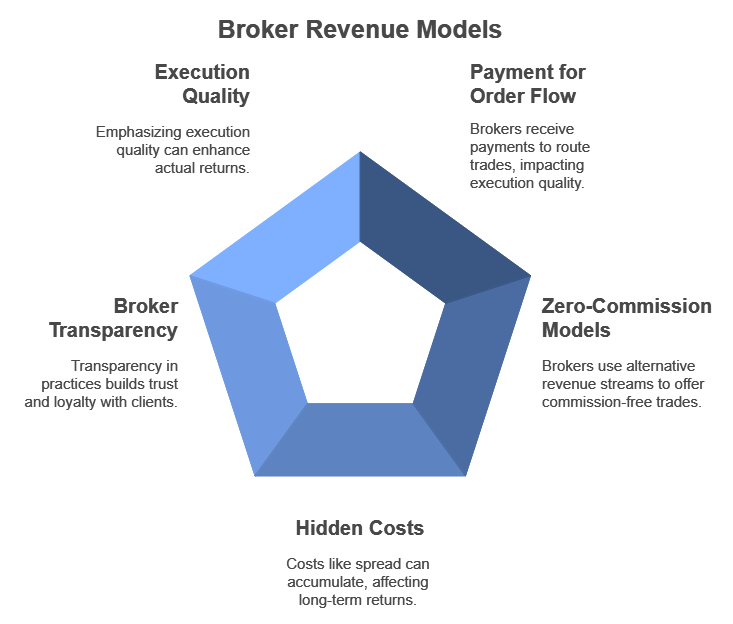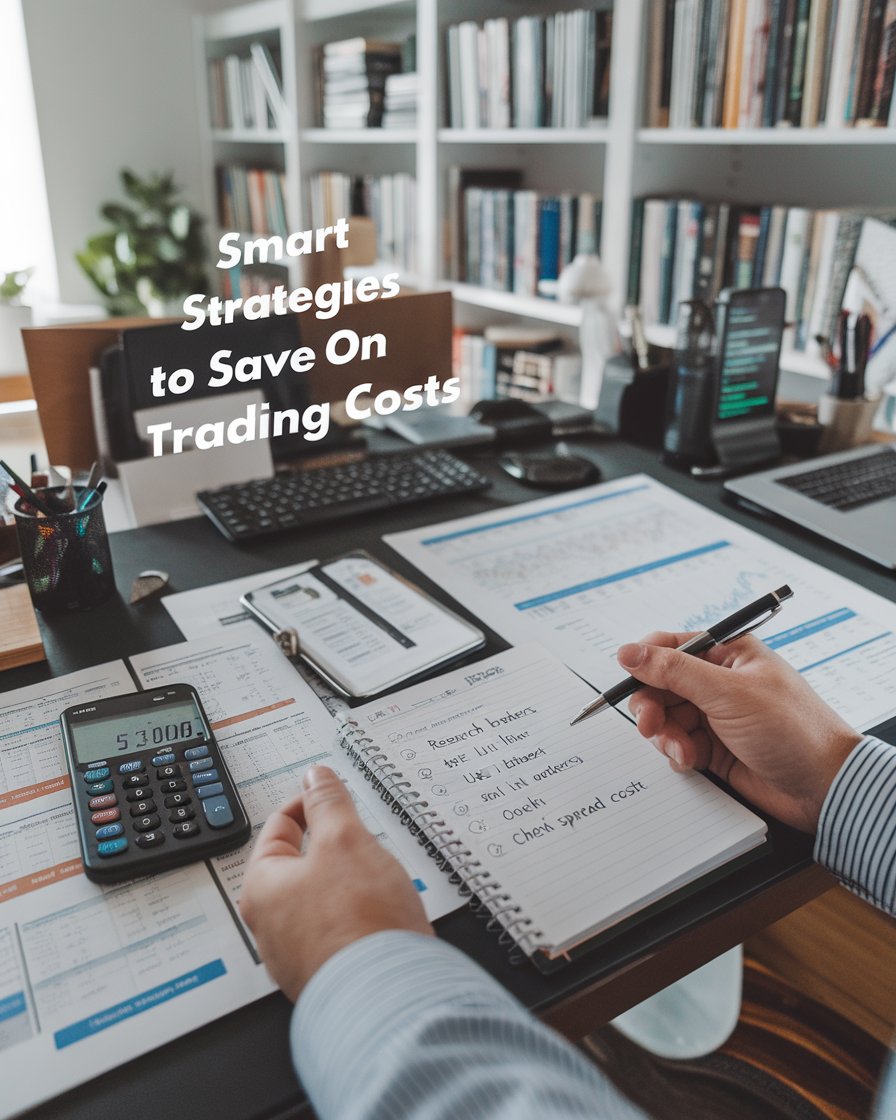Introduction
Investing has become more accessible than ever, thanks to commission-free brokers and zero-commission trading platforms. These platforms eliminate the need for traditional trading fees, encouraging more people to buy and sell stocks. However, while they offer enticing benefits, they often rely on practices like Payment for Order Flow (PFOF) to make money. Through PFOF, brokers receive compensation from market makers for routing customer orders their way, which helps keep trading costs low for users. Yet, understanding how brokers make money behind the scenes can shed light on potential conflicts and help traders make informed decisions.
Navigating the world of online trading means recognizing the trade-offs involved. While commission-free platforms lower the entry barrier, hidden costs like spreads and differences in order execution quality can affect investor returns over time. Traders who are aware of these potential pitfalls can take steps to minimize their impact, from choosing brokers that align with their goals to employing strategies for better trade execution. By considering both the benefits and the limitations of zero-commission brokers, traders can better protect their investments and optimize their trading approach.
Key Takeaways
- Commission-free brokers often rely on Payment for Order Flow (PFOF) to generate revenue.
- PFOF may create potential conflicts between broker revenue and optimal trade execution for clients.
- Zero-commission trading makes investing accessible but requires awareness of hidden costs like spreads.
- Choosing brokers with transparent pricing can help minimize unexpected trading expenses.
- Using limit orders over market orders can improve trade execution quality.
- Balancing low fees with high-quality execution strategies can enhance long-term investment returns.
Understanding How Brokers Make Money in Commission-Free Trading
Commission-free trading has gained popularity as it allows investors to buy stocks without incurring direct fees. However, online brokers, including discount brokers, often rely on strategies like Payment for Order Flow (PFOF) to sustain revenue. PFOF enables brokers to route orders to specific market makers, who pay for each trade, helping brokers manage operational costs without charging fees or commissions directly to clients. While this enables “free” trades, it may affect traders’ execution quality, as offers from various market makers could vary. This model is part of a layered structure where brokers make money through financial instruments without overt fees, potentially leading to challenges in balancing the trader’s best interests.
The Role of Market Makers in Commission-Free Models
Market makers play a critical role in commission-free trading models by providing liquidity and absorbing trade risks. Brokers route trades to these market makers, who then pay brokers a fee for each transaction, a system known as Payment for Order Flow (PFOF). This setup allows brokers to waive trading fees for clients, making it seem as if they’re offering “free” services. However, while market makers benefit from high trade volumes, the structure can introduce incentives for brokers that don’t always align with the best outcomes for the trader, particularly if speed is prioritized over favorable pricing.
Potential Conflicts of Interest in PFOF Arrangements
While PFOF allows brokers to offer commission-free trades, it has raised concerns about conflicts of interest. Some traders worry that brokers may prioritize market makers who pay the highest fees rather than those providing the best trade execution. Although this practice supports the “no commission” model, it may lead to traders experiencing slight disadvantages, such as less optimal pricing on transactions. Understanding these dynamics is crucial for traders who want to protect their investment returns, as it highlights the need for transparency and informed choices when selecting a brokerage service.
Key Factors in Understanding Broker Revenue Models
1. Payment for Order Flow (PFOF) and Its Implications
PFOF is a common revenue model where brokers receive payments from market makers to route trades through them. While this allows brokers to offer commission-free trades, it may impact execution quality if brokers prioritize higher-paying market makers over those offering the best trade terms for clients.
2. How Zero-Commission Models Sustain Revenue
Zero-commission trading relies heavily on alternate revenue streams, with PFOF being the primary method. Some brokers may also use interest on cash balances or offer premium services to generate income without charging trading fees directly.
3. Hidden Costs and Their Long-term Impact
Although trades may appear cost-free, hidden expenses such as spread costs can add up over time. Understanding these costs can help traders make informed decisions that protect their long-term returns.
4. Balancing Broker Benefits and Transparency
Traders should evaluate how a broker’s revenue model aligns with their goals. Brokers that disclose their PFOF practices and offer transparency around trade execution can often build greater trust and client loyalty.
5. The Importance of Order Execution Quality
Order execution quality can vary significantly among brokers. For commission-free trades, the focus may be on routing rather than achieving the best price, which can affect the actual returns. Traders should prioritize brokers that emphasize execution quality as well as low costs.
Evaluating the Impact of Hidden Costs on Trader Outcomes
Hidden costs, such as spreads and specific order execution strategies, can quietly affect trader outcomes, even when using a zero commission broker. As brokers handle trades, spread costs (the difference between buying and selling prices) frequently come into play, particularly with market orders. These hidden fees may reduce expected returns in both commission-based and commission-free setups. The impact of spreads varies depending on each broker’s practices, especially if brokers prioritize speed over pricing. Recognizing these less visible factors is crucial for traders aiming to preserve their returns as they trade stocks, given that these costs can accumulate and influence their financial performance over time.
Understanding Spread Costs in Stock Trading
Spread costs can quietly erode trading profits, especially for those who frequently place market orders. The spread is the difference between the bid (selling price) and the ask (buying price), meaning traders may pay slightly more than the market rate when executing an order. This cost can be especially pronounced in commission-free trades, where the spread often becomes a significant source of income for brokers. Being aware of these hidden expenses allows traders to make more strategic choices, such as opting for limit orders or monitoring the spread before trading.
Market Orders vs. Limit Orders – Balancing Speed and Cost
Traders often have to choose between market orders, which prioritize speed, and limit orders, which prioritize favorable pricing. Market orders are executed immediately but may incur higher costs due to spreads, especially in volatile markets. Limit orders, on the other hand, enable traders to set a specific price, potentially avoiding high spreads but with a slower execution. By understanding these order types, traders can better align their strategies with their financial goals, weighing the trade-off between immediacy and cost-effectiveness to minimize overall trading expenses.
Case Study: Robinhood’s Approach to Commission-Free Trading and Hidden Costs
Robinhood pioneered commission-free trading, quickly attracting millions of users by eliminating upfront trading fees. However, the company faced scrutiny over its reliance on Payment for Order Flow (PFOF) as a revenue model. In 2020, the U.S. Securities and Exchange Commission (SEC) fined Robinhood for allegedly misleading users about the true cost of its trades, claiming that PFOF led to poorer execution quality compared to competitors. This example highlights the importance of understanding hidden costs in commission-free trading. Robinhood’s situation underscores the need for transparency, as well as the impact hidden expenses can have on trader outcomes. For investors, this case study reinforces the need to evaluate brokers’ revenue practices and prioritize execution quality to avoid potential long-term losses.
Benefits and Drawbacks of Zero-Commission Brokers for Traders
Zero-commission brokers have simplified market access, allowing many new investors to participate without facing trading fees. By removing commissions, these brokers lower the entry barrier, attracting both active and new traders. However, this model is not without its drawbacks. Relying on Payment for Order Flow (PFOF) may impact the quality of order execution, as brokers might prioritize revenue over the best market rates. Traders using zero-commission services should consider the benefits of zero commission brokers along with potential downsides of zero commission brokers, ensuring they balance immediate cost savings with their expectations for high-quality execution. This model highlights the trade-offs in broker transparency, as traders must evaluate savings now against possible long-term impacts on their investment strategy.
Accessibility Through Commission-Free Platforms
Commission-free platforms have expanded market access, making it easier for new investors to engage in trading without high upfront costs. By removing commissions, brokers like Robinhood and Charles Schwab have removed a significant barrier, encouraging active trading and greater market participation. This increased accessibility has democratized investing, appealing particularly to younger, tech-savvy users. However, while zero-commission trading opens doors, traders should still be mindful of hidden costs and weigh the overall quality of trade execution against the allure of no fees.
The Trade-Offs in Execution Quality with Zero Commissions
Though commission-free brokers offer cost savings, the quality of order execution can be a concern. Since brokers are incentivized by PFOF, they might direct trades to market makers offering higher fees rather than those with the best prices. This arrangement can lead to “slippage,” where trades are executed at slightly unfavorable prices. For traders who prioritize low-cost trades, understanding these potential compromises is essential. Recognizing that execution quality varies with commission-free platforms helps traders make informed decisions that align with both their financial and strategic goals.
“In the world of investing, you get what you don’t pay for. By offering zero-commission trades, brokers may save you costs upfront, but it’s essential to be vigilant about the quality of those trades.” — Warren Buffett
Effective Strategies for Traders to Minimize Brokerage Costs
Minimizing brokerage costs begins with selecting the right brokerage firms and optimizing trading practices. Investors should conduct thorough research, comparing features, hidden fees, and any extra benefits for new clients. Opting for discount brokerage options with clear disclosure and focusing on execution quality rather than solely on low upfront costs can benefit long-term returns. Additionally, strategies like using limit orders instead of market orders may reduce spread costs. By aligning these choices with financial goals and risk tolerance, traders can enhance their trading outcomes, avoid unnecessary expenses, and make more informed investment decisions.
Researching Brokers for Transparent Pricing and Services
Choosing the right broker is crucial for reducing overall costs. Traders should carefully evaluate brokers’ transparency in pricing, service offerings, and any additional fees. Some brokers provide zero-commission trading but may lack clarity on other costs, such as PFOF or spreads. Reviewing a broker’s reputation for execution quality, customer service, and account features can also guide traders to make more informed decisions that align with their specific trading style and financial objectives.
Enhancing Trade Execution Through Strategic Order Types
Optimizing trade execution can significantly impact trading outcomes. Traders who employ limit orders can often reduce exposure to higher spread costs, securing more favorable prices on their trades. Additionally, active traders might benefit from monitoring market conditions and placing trades during periods of higher liquidity, which can reduce spreads. By combining strategic order types with effective timing, traders can minimize hidden costs and enhance the overall efficiency of their trades, improving long-term profitability.
Conclusion
The rise of zero-commission brokers has transformed the trading landscape, making it easier for more individuals to participate in the stock market. However, understanding how these brokers make money through mechanisms like Payment for Order Flow (PFOF) is essential for traders aiming to protect their investments. Recognizing the nuances of broker revenue models can help traders make informed choices, especially when it comes to evaluating order execution quality and potential hidden costs like spreads.
By considering both the advantages and the drawbacks of commission-free platforms, traders can develop strategies that align with their financial goals. Opting for brokers with transparent pricing and prioritizing execution quality over lower upfront costs can lead to better long-term outcomes. As online trading continues to evolve, staying informed and making strategic decisions will empower traders to navigate the complexities of the market with confidence and protect their returns.



















